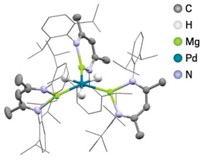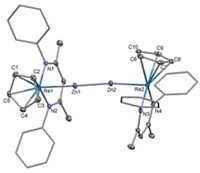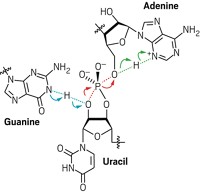Advertisement
Grab your lab coat. Let's get started
Welcome!
Welcome!
Create an account below to get 6 C&EN articles per month, receive newsletters and more - all free.
It seems this is your first time logging in online. Please enter the following information to continue.
As an ACS member you automatically get access to this site. All we need is few more details to create your reading experience.
Not you? Sign in with a different account.
Not you? Sign in with a different account.
ERROR 1
ERROR 1
ERROR 2
ERROR 2
ERROR 2
ERROR 2
ERROR 2
Password and Confirm password must match.
If you have an ACS member number, please enter it here so we can link this account to your membership. (optional)
ERROR 2
ACS values your privacy. By submitting your information, you are gaining access to C&EN and subscribing to our weekly newsletter. We use the information you provide to make your reading experience better, and we will never sell your data to third party members.
Environment
Lead Binding Reexamined
Trigonal pyramidal coordination to sulfur may be key to mechanism of lead poisoning
by DAVID BARRY
June 27, 2005
| A version of this story appeared in
Volume 83, Issue 26
BIOCHEMISTRY

Lead poisoning may be due to an unanticipated coordination geometry for lead in sulfur-rich sites, a new study suggests.
In the past decade, biologists have found evidence that low levels of lead can cause developmental disorders in children by disrupting the function of regulatory proteins called transcription factors. The prevailing hypothesis is that lead displaces zinc from sulfur-rich structural binding pockets in the proteins, causing them to fold improperly. Yet a detailed chemical understanding of how lead acts differently from zinc to reshape and disable the proteins has been lacking.
A new study shows that lead preferentially binds to only three sulfurs in a trigonal pyramidal configuration, even when additional sulfurs are available (J. Am. Chem. Soc. 2005, 127, 9495). Zinc, on the other hand, binds sulfur in a four-coordinate, tetrahedral fashion. A team of scientists led by chemistry professor Hilary A. Godwin and graduate student John S. Magyar at Northwestern University, along with chemistry professor James E. Penner-Hahn and his group at the University of Michigan, carried out the work.
Godwin says the observed difference in binding explains how lead could cause improper protein folding. That lead would coordinate with sulfur-rich binding sites in a trigonal fashion even when four thiol groups are available never occurred to us, Godwin says. The chemical literature has widely suggested that lead binds sulfur in a four-coordinate fashion.






Join the conversation
Contact the reporter
Submit a Letter to the Editor for publication
Engage with us on Twitter